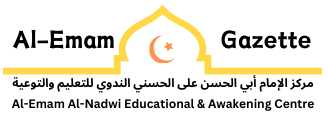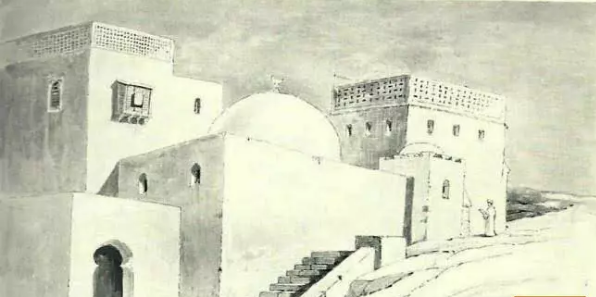Imam al-Tirmidhi was gifted with deep spiritual insight and a living heart. Through immense dedication, he compiled the revered Al-Shamā’il al-Muḥammadiyyah (الشمائل المحمدية), preserving the noble traits of the Prophet. His work remains a luminous guide, enabling the Muslim community to know, love, and emulate their Prophet’s perfect character across generations.
The Prophet Muhammad (peace and blessings be upon him) represents the pinnacle of human perfection, embodying a flawless union of physical beauty and sublime character. His life and attributes serve as a guide and inspiration, as affirmed by Allah in the Quran: “And indeed, you are of a great moral character” [68:4]. An exploration of his traits, known as the Shama’il, reveals a person perfect in form and spirit. Let’s have a comprehensive overview of his physical appearance, daily life, and the unique characteristics that distinguished him from all other human beings.
Physical Attributes
The Prophet’s physical appearance was a harmonious balance of grace and strength, described in detail by his companions.
- Stature and Build: He was of medium height, neither excessively tall nor short, and perfectly proportioned among men. He had broad shoulders, a large head, and prominent joints, indicating a strong constitution.
- Complexion and Beauty: His complexion was white with a rosy hue, not glaringly white nor dark. The companion Jabir ibn Samurah, comparing him to the moon on a clear night, declared that the Prophet was more beautiful than the moon itself. He was described as being “as if molded from silver.”
- Hair: His hair was neither coarse and curly nor perfectly straight and smooth, but a gentle wave in between. Its length varied; sometimes it reached his earlobes (لمة), and at other times it rested on his shoulders (جُمّة). He would occasionally plait his hair into four braids. He took care of his hair, combing it every other day, always starting with the right side. He had very few white hairs, numbering less than twenty in total, on his temples, beard, and the parting of his hair, which he would dye with henna and katam (a plant-based dye), giving them a reddish-brown color.
- Facial Features: He had a wide mouth, which was considered a sign of eloquence, and long eye-slits. His heels were lean with little flesh.
- Manner of Walking: He walked with purpose and vigor, leaning forward as if descending from a high place. His stride was powerful and quick, and he never dragged his feet like one who is lazy. Abu Hurayrah noted, “I have not seen anyone walk faster than the Messenger of Allah, it was as if the earth was folded for him. We would exhaust ourselves while he was without a care.”
- The Seal of Prophethood: Between his shoulder blades, closer to his left shoulder, was the Seal of Prophethood. It was a reddish, fleshy protuberance the size of a pigeon’s egg, surrounded by small warts and a few hairs. Far from being a blemish, it was considered a mark of beauty and a physical sign of his divine mission.
His Manners and Conduct
As remarkable as his outward form was, his character was even more extraordinary.
- Humility: Despite being the leader of humanity, he lived simply. He patched his clothes, mended his sandals, and served his family at home. When sitting, he sat like the humble—sometimes cross-legged, sometimes sitting on his heels or in a crouch. He never displayed arrogance.
- Moderation: He disliked extravagance and waste, whether in food, clothing, or possessions. He ate sparingly, slept modestly, and owned little of this world.
- Interpersonal Dealings: He was gentle and kind. He treated children with affection, women with respect, companions with loyalty, and even enemies with justice.
- Gratitude and Remembrance: He was constantly mindful of Allah, beginning and ending every action with praise. He reminded his followers to remember Allah at the table, in travel, at rest, and in hardship.
- Cheerfulness: He smiled readily, though his laughter was never excessive but modest. His presence uplifted those around him with warmth and serenity.
Clothing and Possessions
The Prophet’s belongings reflected his life of simplicity and humility.
- Garments: His favorite garment was a simple shirt (قميص), with sleeves that reached his wrists. He also wore a two-piece set consisting of a lower garment (إزار) and an upper garment (رداء). He wore a red-striped cloak but discouraged wearing purely red garments, as that was more common for women. He once wore a Roman cloak with narrow sleeves, demonstrating the permissibility of wearing clothing made by non-Muslims.
- Footwear: His sandals were simple, with two straps. He practiced the etiquette of wearing the right sandal first and taking off the left one first, ensuring the right foot was the first to be shod and the last to be bare. He forbade walking in a single sandal.
- Ring: He had a silver ring, which he wore on his right hand. Its stone was Abyssinian, and it was engraved on three lines with the words “محمد رسول الله” (Muhammad, the Messenger of Allah). He began using it to seal letters sent to foreign kings and rulers.
- Weapons and Armor: For battle, he took practical means of protection. He owned a sword with a silver pommel, wore chainmail armor (once wearing two layers during the Battle of Uhud), and a helmet to protect his head. This taught his followers to combine reliance on God with taking necessary worldly precautions.
- Turban: He wore a black turban, often letting its end hang down between his shoulders.
Lifestyle, Diet, and Manners
The Prophet’s daily life was a lesson in asceticism, humility, and gratitude.
- Humility: He lived a life of profound simplicity. He would sit humbly on the floor, sometimes squatting (القرفصاء), and at other times with one leg crossed over the other. He never ate at a raised table (خوان), a sign of luxury at the time. Instead, his food was served on a leather mat (سفرة) placed on the ground.
- Dietary Habits: He was content with whatever food was available and never craved what he did not have. He and his family would often go for consecutive nights without a meal. From extreme hunger, he once tied stones to his stomach to alleviate the pain and support his back.
- Foods He Enjoyed: Despite his asceticism, he appreciated wholesome foods when available. He praised vinegar, saying, “What a fine condiment vinegar is.” He ate roasted meat, chicken, dates, and drank cool water. He was particularly fond of pumpkin, sweets, and honey. His favorite cut of meat was the shoulder, which was the part a Jewish woman poisoned in Khaybar. Although he spat out the bite after realizing it was poisoned, some of the poison entered his system, and he felt its effects until his death, granting him the status of a martyr.
- Eating Etiquette: His manners were a model of humility and mindfulness. He ate with his three fingers and would lick them clean after finishing his meal. He taught his companions to say the name of Allah before eating to invite blessings and to praise Him afterward. One of his prayers after a meal was, “All praise is for Allah, a praise which is abundant, pure, and blessed. It is not a praise that we wish to bid farewell to, nor that we can do without, O our Lord.”
Unique Prophetic Characteristics
Allah bestowed upon Prophet Muhammad certain characteristics and rulings that were exclusive to him.
- Distinctions in the Hereafter: He holds the station of the Great Intercession (الشفاعة العظمى) on the Day of Judgment, a role no one else can fill. He will be the first person resurrected, the first to prostrate before Allah, and the first to be granted entry into Paradise. He has the most followers of any prophet and will carry the Banner of Praise (لواء الحمد) on that day.
- Miracles and Blessings: He was aided by the awe he inspired in his enemies from a month’s journey away. Unlike other prophets sent to a specific people, his mission was for all of humanity. Seeing him in a dream in his true form is a genuine vision, as Satan cannot impersonate him. His jinn companion, assigned to every human, converted to Islam. In prayer, he could see the congregation behind him as clearly as he saw what was in front of him.
- Exclusive Rulings and Permissions:
- His sleep, even when lying down, did not nullify his ablution.
- He was permitted to practice continuous fasting (الوصال), which he forbade for his followers, explaining, “I am not like you; I am given food and drink by my Lord.”
- His wealth was not to be inherited; after his death, it became property of the public treasury for the benefit of the Muslims.
- He was permitted to marry more than four women, and his wives were forbidden to remarry after his passing, holding the status of “Mothers of the Believers.”
- It was an obligation upon him to pay the debts of any Muslim who died insolvent.
- He was forbidden from composing poetry and from being able to read or write, a sign that the Quran was purely a divine revelation.
- Once he put on his armor for battle, it was forbidden for him to remove it until after he had fought.
- Other Distinct Signs:
- Supported by awe in the hearts of enemies from a distance of a month’s travel.
- Granted the river of Kawthar in Paradise.
- Encountered the miraculous splitting of his chest, cleansing his heart.
- Saw behind him in prayer as clearly as in front.
- His sweat and hair were sources of blessing.
Even at his passing, his uniqueness continued: he was buried where he died, as was the case with prophets before him.
O Allah, bestow Your peace, blessings, abundance, and grace upon Muhammad, Your Prophet, servant, and Messenger—our guide and exemplar, the bearer of the banner of praise, the intercessor whose intercession is accepted, the gatherer after whom humanity shall be assembled, and the seal after whom no prophet shall come. May Allah’s blessings be upon him, his family, his wives, his righteous descendants, and all who follow them with excellence until the Day of Judgment. May Allah’s peace and blessings be upon our Prophet Muhammad and his family.
Ahmad Suhaib Nadvi
Al-Emam Gazette
Email: al.emam.education@gmail.com
Al-Emam Al-Nadwi Education & Awakening Center
New Delhi, India
Reference:



